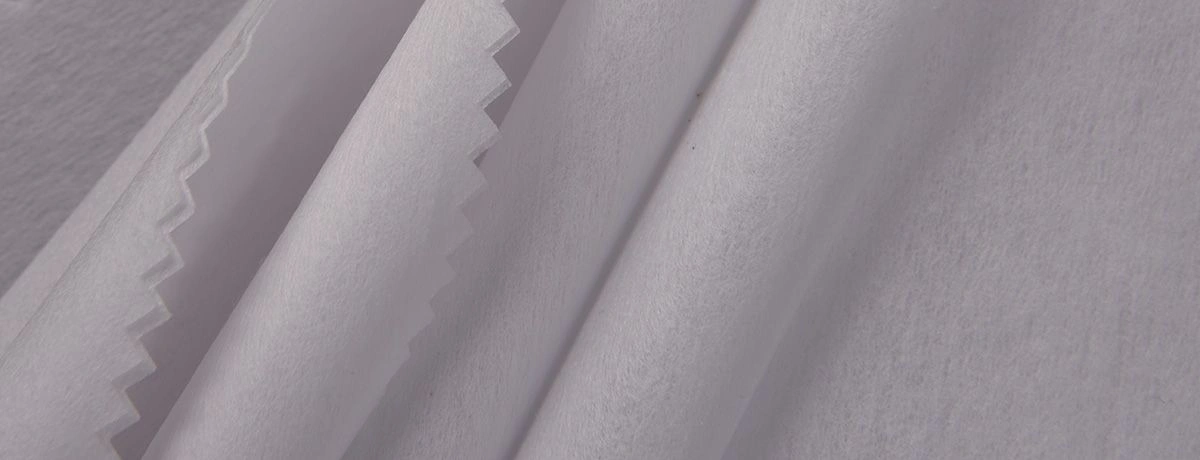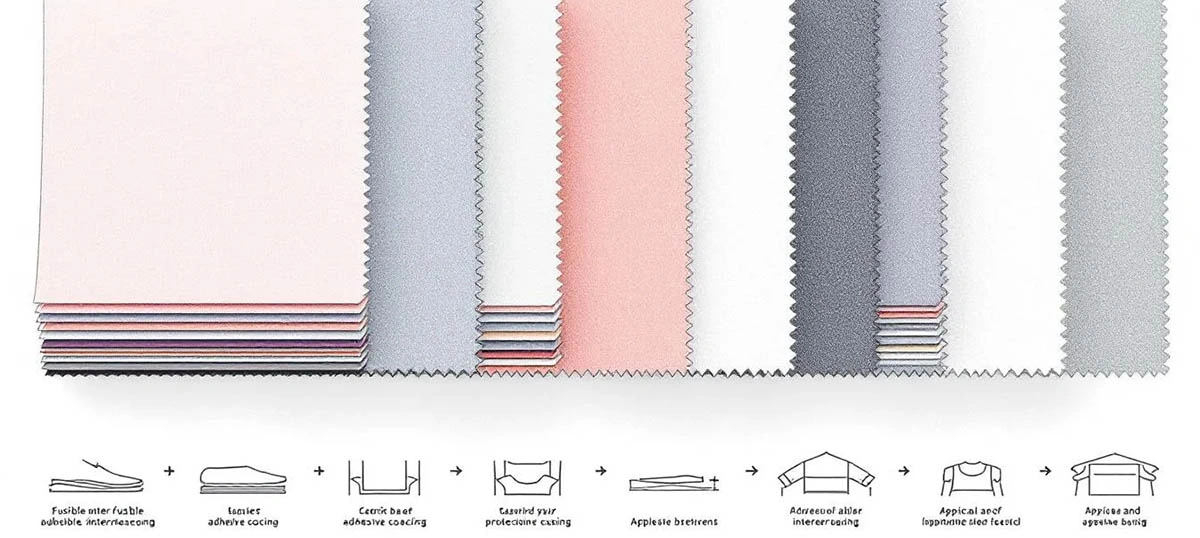Best Ways to Use Interfacing Fusible for Sewing Projects

Interfacing fusible, also known as iron-on interfacing, enhances fabric stability and structure. This guide will help you understand its types, choose the right one, and apply it correctly.
Key Takeaways
-
Fusible interfacing is essential for adding structure and stability to various sewing projects, transforming homemade garments into professionally tailored pieces.
-
Choosing the right type and weight of fusible interfacing is critical; options include woven, non-woven, knit, fusible fleece, and heavyweight interfacing, each suited for different fabrics and project needs.
-
Proper application and maintenance of fusible interfacing, including accurate identification of the fusible side and adhering to washing guidelines, are key for achieving a polished and durable finish in sewing projects.
Understanding Interfacing Fusible
Fusible interfacing is the unsung hero of the sewing world. It’s a type of interfacing equipped with adhesive dots that bond fabric when exposed to heat. Commonly referred to as iron-on interfacing, this material works wonders in enhancing the structure and stability of fabric in various sewing projects.
But why is fusible interfacing so crucial? Simply put, it provides the much-needed support that keeps your fabric from sagging or wrinkling, giving your finished project a polished look. Whether you’re working on a delicate blouse or a sturdy tote bag, fusible interfacing ensures that your fabric maintains its shape and holds up well over time.
Adding fusible interfacing can transform a homemade garment into one that looks professionally tailored. Now, explore the different types of fusible interfacing and how to select the right one for your projects.
Types of Interfacing Fusible

Fusible interfacing comes in various fabric types, each designed to cater to different fabrics and project needs. Understanding the differences can help you make the best choice for your sewing endeavors.
Woven interfacing is similar to traditional woven fabric, making it an excellent choice for medium to heavyweight materials. It adds stability without compromising the drape, which is especially beneficial for delicate fabrics like silk. This type of interfacing is perfect for garments that need to maintain a certain shape while still looking natural.
On the other hand, non-woven interfacing is made from bonded fibers without a specific grainline. This makes it easy to cut in any direction, though it’s less durable after washing. It’s a versatile option that can be used for various projects, but it’s best to consider its longevity if your item will be frequently laundered.
Knit interfacing features crosswise stretch and is ideal for knit fabrics, allowing the fabric to move while preventing excessive stretching. This type of interfacing is perfect for projects that require a bit of give, such as t-shirts and stretchy dresses.
Lastly, fusible fleece and heavyweight interfacing cater to projects needing more structure, such as bags and quilts. Fusible fleece offers good loft, adding a plush feel, while heavyweight interfacing provides the firm structure necessary for items like tailored jackets.
Choosing the Right Weight
Selecting the right weight of fusible interfacing is crucial for achieving the desired effect in your sewing projects. The weight of the interfacing affects how much structure it adds to the fabric. Heavier options are suitable for more robust projects, while lighter weights are ideal for delicate fabrics.
For delicate projects, lightweight interfacing is perfect as it enhances the body of the fabric without adding stiffness. This is particularly useful for projects like blouses or linings where you want to maintain a soft drape. Knit fabrics also benefit from lightweight knit interfacing to preserve their stretch and flexibility during wear.
Mid weight interfacing strikes a balance by providing enough structure for garments that need support, such as dresses or shirts, without making them too rigid. On the other hand, heavy weight interfacing is best for creating firm structures in projects like bags and tailored garments. It adds significant body and stability, ensuring that your project holds its shape.
When you choose interfacing, it’s advisable to select a weight that is similar to or lighter than the fabric to maintain the appropriate drape and effectiveness. With a wide range of options from 20gsm to 200gsm, finding the right weight for your project is easier than ever.
Identifying the Fusible Side
Recognizing the fusible side of interfacing ensures successful application. Look for:
-
A shiny appearance
-
An adhesive coating, which should be placed against the fabric
-
A bumpy texture, indicating the adhesive that will bond with the fabric when heated
To ensure the adhesive bonds correctly, providing stability and structure:
-
Place the bumpy side down against the wrong side of the fabric.
-
Double-check by feeling for the rough texture.
-
Look for the shiny surface to confirm the fusible side that has adhered.
Start by listing some forbidden forms of the keyword “learn” according to the rule 5.
Correct identification and placement of the fusible side are key steps in the interfacing process. Doing this right from the start prevents mishaps and ensures a smooth, secure marked content, professional finish. By following these steps, you can learn to achieve the best results.
Cutting Interfacing Fusible
Accurate cutting of fusible interfacing is essential for a successful sewing project. Use tools like a rotary cutter or scissors for precise edges, crucial for projects needing exact measurements and clean lines.
For small interfacing pieces, fuse a larger piece to the fabric first, then cut out the necessary shapes. This method saves time and ensures perfect alignment with your fabric pieces.
For lightweight interfacing, cut it to match the fabric size for specific applications. Precision ensures a good fit and seamless integration with your fabric pieces, leading to a polished, professional-looking project.
Applying Interfacing Fusible
Correct application of fusible interfacing is crucial for a smooth, stable finish. For Vliesline interfacing, use medium heat to ensure proper adhesion without damaging the fabric. Press using an up-and-down motion to maintain the layers and spray prevent shifting.
Turn the fabric over and press on the right side to ensure proper adhesion. This extra step can significantly improve the final result. Always use a dry iron to prevent moisture from affecting the adhesive process.
Test fusible interfacing on a small fabric piece first to ensure the adhesive works correctly and doesn’t affect the fabric adversely. After smoothing out the interfacing, allow it to cool completely before storing to maintain its shape and stability.
Removing Wrinkles and Creases
Wrinkles and creases in fusible interfacing are common but fixable. Re-heating can melt the glue, allowing adjustments to smooth out wrinkles. This technique ensures the interfacing lies flat against the fabric.
If you find creases, gently peel back the fabric and smooth out the interfacing before re-pressed. This step ensures proper adhesion and shape retention.
Wrinkles and creases affect the appearance and functionality of sewing projects, so removing them is essential for a professional finish.
Where to Buy Quality Interfacing
High-quality fusible interfacing is critical for successful sewing projects. Customers can purchase it at a local shop or online retailers, which often offer a variety of good quality options to meet specific needs.
MH is a notable supplier offering both woven and non-woven fusible interfacings to garment factories, tailors, and textile wholesalers worldwide. They provide stable bulk supply and factory-direct pricing, making them a reliable choice for quality interfacing.
Exporting to over 150 countries, MH also offers OEM/ODM customization for coating type, width, and packaging, ensuring you deliver exactly what you need for your projects.
Projects Perfect for Interfacing Fusible

Fusible interfacing enhances a wide range of sewing projects, providing necessary structure, stability, and a stabilizer for water resistance.
For garments, fusible interfacing adds support to collars and cuffs, ensuring they maintain shape and look crisp. Jackets benefit from interfacing by gaining the structure needed for a tailored appearance.
For accessories, fusible interfacing is ideal for structured items like tote bags and wallets, add the firmness required to keep them functional and aesthetically pleasing, including the necessary convenient pockets. Bag making with fusible interfacing ensures that your creations maintain their shape and style.
Quilts and sewn accessories like pouches and organizers also benefit from the stability provided by fusible interfacing, making them more durable and well-shaped. The right interfacing can truly elevate your projects.
Maintaining Fused Fabrics
Maintaining fabrics fused with interfacing ensures longevity and performance. If placed incorrectly, removing interfacing can be challenging and may damage the fabric, so precision during application is crucial.
After pressing the interfacing, let the fabric cool for about 30 minutes to ensure the adhesive sets properly and the fabric retains its shape. This cooling period helps maintain the stability and support provided by the interfacing.
Proper washing and care are also important. Follow the manufacturer’s instructions for cleaning and maintaining your fused fabrics to ensure they continue to perform well over time. This includes being mindful of washing temperatures and avoiding excessive heat during ironed.
Taking these steps helps ensure that your sewn garments and projects maintain their structure and support, providing long-lasting quality and durability in sewers to protect them in various settings, including the yard. Crafts play a significant role in enhancing these elements, ensuring security. Additionally, it is important to sew with care to achieve the best results.
Summary
In summary, fusible interfacing is an invaluable tool for any sewer looking to add structure and stability to their projects. From understanding the different types available to choosing the right weight and mastering the application process, each step is crucial for achieving professional results.
By correctly identifying the fusible side and applying the interfacing with care, you can ensure a smooth and stable finish. Removing wrinkles and creases, finding quality interfacing, and maintaining fused fabrics are all part of the process that contributes to the longevity and quality of your sewing projects.
So, experiment with fusible interfacing in your next project. With the knowledge and tips shared in this guide, you’re well on your way to creating beautiful, professional-looking garments and accessories. Happy sewing!
Frequently Asked Questions
How to fuse interfacing to fabric?
To effectively fuse interfacing to fabric, place the interfacing on top of the fabric with wrong sides together, then apply heat with an iron, following the manufacturer's instructions. Ensure to allow the fabric to cool completely before handling to secure the bond.
How do I choose the right weight of fusible interfacing for my project?
Choose fusible interfacing that is similar to or lighter than your fabric to ensure the right drape and functionality. For delicate projects, opt for lightweight interfacing; for garments requiring structure, consider medium or heavyweight options.
How can I identify the fusible side of the interfacing?
You can identify the fusible side of interfacing by its shiny appearance and slightly bumpy texture. Make sure this side is facing the wrong side of your fabric for effective adhesion.
What should I do if there are wrinkles in my fusible interfacing after application?
To address wrinkles in your fusible interfacing, re-heat it to melt the glue, carefully peel back the fabric to smooth out the creases, and then re-press to secure it in place effectively. This will help maintain proper adhesion and the intended shape.
Where can I buy good quality fusible interfacing?
You can find good quality fusible interfacing at local sewing shops or through reputable online retailers like MH, which offers a range of options for customization. Shopping at these sources ensures you get a reliable product for your sewing needs.


